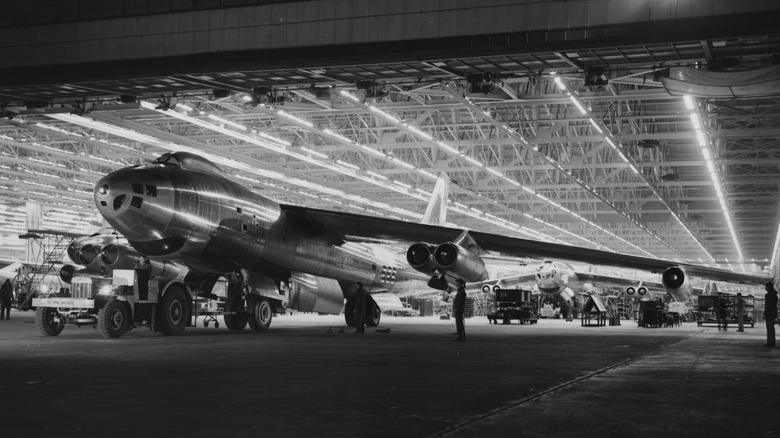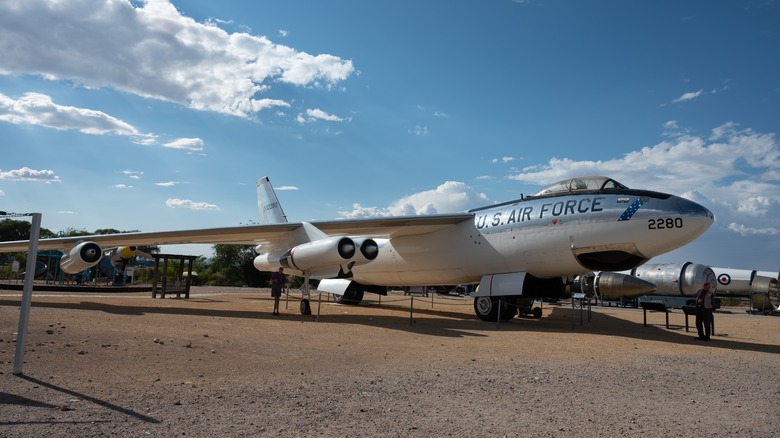The Revolutionary Strategic Bomber That Paved The Way For Modern Jets
As World War II concluded, both the United States and the Soviet Union emerged as the world's dueling superpowers. As the Cold War was kicked into high gear, either country had to be ready to start dropping nukes at the drop of a hat should the other country start preparing a strike. This paranoia and constant case of one-upmanship led to massive strides in weapons and technological development on both sides of the Iron Curtain.
In addition to making technological advances in rocketry that made nuclear-capable intercontinental ballistic missiles (ICBMs) possible, both the Americans and the Soviets dumped heavy amounts of time, money, and effort into building long-range strategic bombers. Long-range bombers allow either force to retaliate against a first strike in what would likely devolve into World War III, or knock out strategic targets to crush morale, stall technological development, or a host of other missions.
Today, the United States has the B-1 Lancer, B-2 Spirit, and B-52 Stratofortress, and many other options in its long range bomber arsenal. But before those war machines came into play, the Air Force relied on one jet bomber that made all the others possible: the B-47 Stratojet.
The United State's first jet bomber
According to Boeing, every single big jet owes its existence to the B-47. It was a jet of "firsts" when it was first prototyped in 1947. It had swept back wings at a 35-degree angle as opposed to straight wings as seen on the previous B-29 bomber. Its 600+ mile per hour top speed was powered by jet engines hanging underneath the wings, when every other bomber was still propeller driven.
It's worth noting that the Soviet Union's Tupolev Tu-95 "Bear" — developed in the early 1950s and still serves today in Russia's air force — uses propellers. The B-47 was adopted into reconnaissance roles, weather reporting duty, and of course, carrying bombs.
It stopped production in 1956 with 2,032 B-47s in all varieties taking to the skies. The B-47, when it was new, broke the record for a transcontinental flight across the United States. It went from coast to coast in a little less than four hours.
In the closing days of World War II, when everything the military was developing was "ahead of its time," the B-47 still looks futuristic today. Eventually, the B-47 was retired in favor of the much larger (and much uglier) B-52 Stratofortress, which still serves in the Air Force today.

